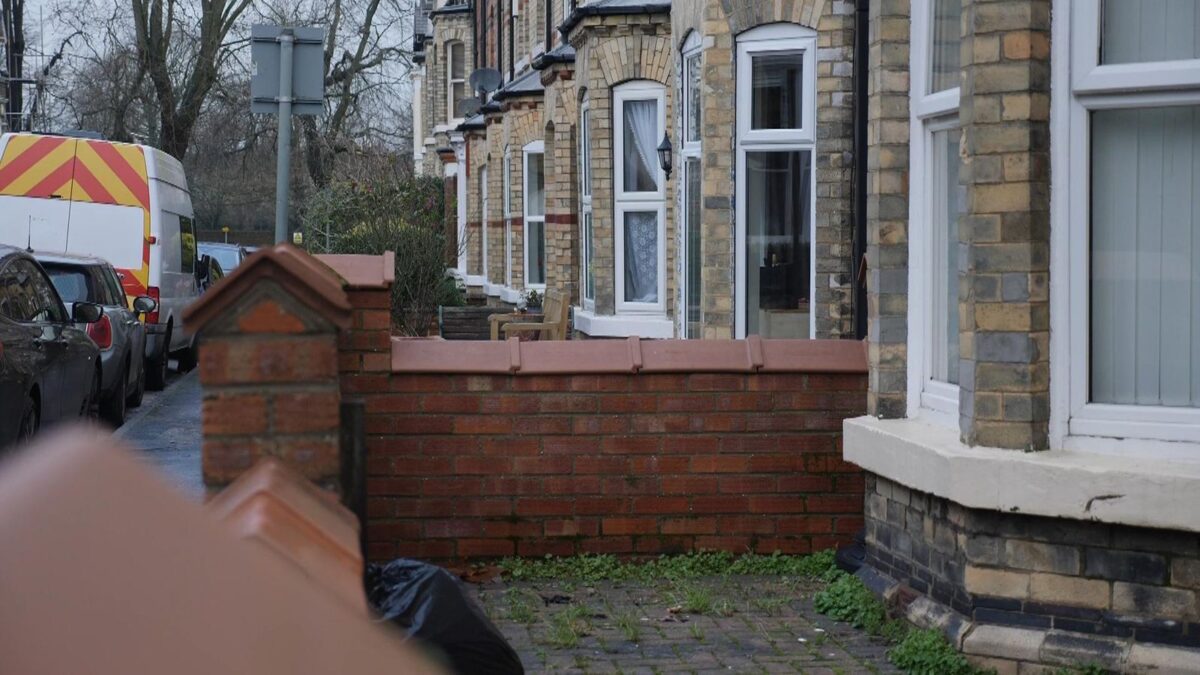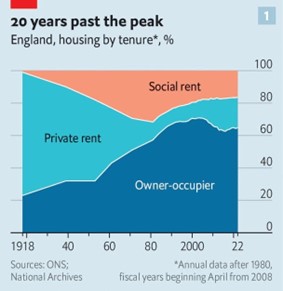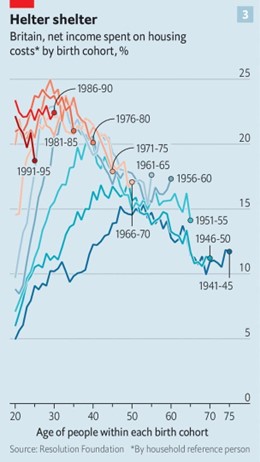Labour Conference is back! The first conference with a Labour Government in 15 years will see Liverpool teeming with Labour Party activists, VIPs and the broader political world.
Hundreds of events look to be forming out a packed-out calendar, so this editor thought it would be useful for Red Brick readers attending conference to have a quick guide of what’s going on for housing.
This will be split into events, exhibition, and conference floor, with notes for when and where events are happening.
Only confirmed speakers will be registered here, given the number of organisations who include over-ambitious invitations.
Please note that some events may require booking to enter, we recommend that you also check with the event organiser in advance.
If you would like your event included in this list or would like to make an amendment please get in touch with us at RedBrick@labourhousing.org
Hall speeches and debates:
Sunday 22nd September:
11:25am – 11:35am | Deputy Leader of the Labour Party’s Speech
Tuesday 24th September:
2:00pm – 4:00pm | Leader of the Labour Party’s Speech
Fringes:
Sunday 22nd September
11:30am – 12:30pm | Meeting Room 12, ACC | Finding Local Solutions to the Housing Crisis (The Labour Party) Join a panel of local government leaders to discuss how Labour Councils can support the Government’s target to build 1.5 million homes.
3:00pm – 4:00pm | Progressive Britain Hub, ACC | “Getting Planning Right: How can we get Britain building and promote nature’s recovery?” (Progressive Britain, CPRE, National Trust, RSPB and the Woodland Trust) Is it possible to deliver growth through the planning system and tackle the nature crisis? Or are the two mutually exclusive?
Speakers:
- Baroness Sharon Taylor
- Mary-Ann Ochota (Broadcaster, author and anthropologist)
- Abi Bunker (Woodland Trust)
- Craig Bennett (The Wildlife Trusts)
- Rob Boughton (Thakeham)
- Marc Harris (Labour YIMBY)
3:15pm – 4:30pm | Meeting Room 4B, ACC | Delivering the homes the country needs (NHBC) A housing event with industry CEOs, senior stakeholders and Party members.
3:30pm – 4:30pm | Arena Room 8, ACC | How can Labour fix the renting crisis? (Renters’ Reform Coalition).
Speakers:
- Tom Darling, Renters’ Reform Coalition (Chair)
- Vicky Spratt (The i paper)
- Anny Cullum (ACORN)
- Tom McInnes (Citizens Advice)
3:30pm – 4:30pm | Arena Room 10, ACC | How can Labour work with communities to end rough sleeping? (Christians on the left).
Speakers:
- Bonnie Williams (Housing Justice)
- Cllr George Dunstall (Haringey Council)
4:00pm – 5:00pm | Premier Inn Liverpool Albert Dock | Warming up? Electrifying home heating (Bright Blue and Thermal Storage UK). Join Bright Blue and Thermal Storage UK as we discuss the technologies for and challenge to the electrification of home heating. Speakers:
- Ryan Shorthouse (Bright Blue) (Chair)
- Fiona Harvey (The Guardian)
- Guy Newey (Energy Systems Catapult)
- Dr Robert Barthope (University of Sheffield).
4:15pm – 5:30pm | Mersey Suite, Pullman Hotel | Brick by brick: a plan to deliver the social homes we need (Shelter).
4:30pm – 5:30pm | Startup Coalition Tech Hub | Built different: accelerating the decarbonisation of the built environment through tech and innovation (Startup Coalition and Checkatrade). A panel discussion on how the Labour Government can deploy technology to accelerate its Warm Homes Plan, decarbonise the housing stock and empower consumers to lower their energy bills.
4:30pm – 6:00pm | Albert Johnston suite, Novotel Liverpool Centre | Rally for Social Housing (Labour Housing Group)
Speakers:
- Paula Barker MP
- Rachel Blake MP
- David Smith MP
- Peter Swallow MP
- Andrew Lewin MP
- Jenny Riddell- Carpenter MP
- Luke Murphy MP
- Ike Mbamali (Prowgress)
- Mairi MacRae (Shelter)
- Martin Hilditch (Inside Housing Build Social)
- Cllr Julie Fadden (Liverpool City Council)
- Cllr Peray Ahmet (Haringey Council)
- Mark Slater (Greater Manchester Tenants’ Union)
- Gordon Johnstone (House Everyone in Liverpool Properly)
- Jasmine Basran (Crisis)
6:00pm – 7:00pm | Meeting Room 9, Leonardo’s Hotel | Health Inequality and Cold Homes: An evening with Professor Sir Michael Marmot (Friends of the Earth and Institute of Health Equity).
Speakers:
- Mike Childs (Friends of the Earth) (Chair)
- Professor Sir Michael Marmot (Institute of Health Equity)
6:00pm – 6:30pm | Arena Room 7, ACC | More than a landlord: How can housing associations help tackle the housing crisis? (SME4Labour and Clarion Housing Association).
Speakers:
- Clare Miller (Clarion Housing Group)
6:30pm – 8:00pm | Arena Room 9, ACC | Social housing into the next century (West Midlands Housing Association Partnership)
7:00pm – 9:00pm | Imagine, Hilton Hotel | Labour YIMBY: Rally for the Builders (Labour YIMBY and Homes for Britain supported by Britain Remade and LPDF).
Speakers:
- Cllr Shama Tatler (London Borough of Brent) (Chair)
- Shreya Nandy (Labour YIMBY)
- Marc Harris (Labour YIMBY)
- Chris Curtis MP
- Dan Tomlinson MP
- Yuan Yang MP
- Eve McQuillan (LPDF)
- Issy Waite (Labour Students)
- Abdi Duale (Labour NEC)
7:30pm – 9:00pm | The Purpose Coalition Tent, ACC | The Warmer Homes Reception (The Purpose Coalition and E.ON). The Warmer Homes Reception will explore how the new Labour government and business can work in partnership to ensure everyone has the energy security they need.
Monday 23rd September
9:00am – 10:00am | Meeting Room 9, Leonardo Hotel | Where does the Private Rented Sector fit into Labour’s plans for Housing? (Social Market Foundation and Paragon). Labour have made commitments to help tenants in the private rented sector by banning no fault evictions, but what more can be done to raise standards and deliver more homes to address the supply-demand imbalance?
Speakers:
- Jamie Gollings (Social Market Foundation) (Chair)
- Nigel Terrington (Paragon Banking Group)
- Vicky Spratt (The i paper)
- Gráinne Gilmore (Cluttons)
9:30am – 10:30am | Gallery 2, RIBA North, 21 Mann Island | Delivering high-quality affordable homes? (Royal Institute of British Architects and Peabody). Join RIBA and Peabody alongside an expert panel to discuss how the new Labour government can both build new affordable homes at scale and also deliver good quality homes and sustainable places.
10:00am – 11:00am | Arena Room 7, ACC | Boosting the UK’s Small House Builders (SME4Labour and Federation of Master Builders).
Speakers:
- Brian Perry (Federation of Master Builders)
- Sonia Khan MP
11:00am – 11:45am | Meeting Room 11B, ACC | Homes for All: How could Labour support a broad and balanced curriculum? (New Statesman and Nationwide Foundation)
Speakers:
- Richard Parker (Mayor for the West Midlands)
- David Orr (Homes for All)
- Kate Markey (Nationwide Foundation)
12:00pm – 12:50pm | Meeting Room 11B, ACC | How can Labour shape the future of UK housing?
Speakers:
- Matthew Pennycook MP
- Meg Hillier MP
- Satvir Kaur MP
- David Orr (Homes for All)
- Kate Markey (Nationwide)
- Jon Bernstein
12:00pm – 12:45pm | Meeting Room 11C, ACC | How can Labour end the housing crisis? (New Statesman and G15)
Speakers:
- Fiona Fletcher Smith (G15)
12:30pm – 1:30pm | Meeting Room 10, ACC | Ending blanket bans on pets in privately rented homes: where next? (Mars Petcare and Battersea Dogs and Cats Home)
Speakers:
- Lorna Cattling (Mars Petcare)
- Peter Laurie (Battersea Dogs and Cats Homes)
- Misa von Tunzelman (Lendlease)
12:30pm – 2:00pm | Grace Suite 3, Hilton Hotel | Impact of Temporary Accommodation on Children (Shared Health Foundation). There are over 145,000 children experiencing homelessness in Temporary Accommodation. Can this government improve conditions for the country’s most vulnerable children and end child homelessness?
Speakers:
12:30pm – 1:30pm | Meeting Room 12, ACC | Labour’s Housing Mission: Delivering Development in Partnership (Planning Futures and Vistry Group).
Speakers:
- Cian Bryan (Planning Futures) (Chair)
- Lindsey Richards (RTPI)
- Andrew Taylor (Vistry Group)
- Mark Washer (SNG)
12:30pm – 2:00pm | Arena Room 3, ACC | What role can housing associations play in delivering the biggest increase in affordable and social housing in a generation? (National Housing Federation in partnership with Karbon Homes and Guinness Homes).
Speakers:
- Kate Henderson (NHF)
- Catriona Simons (Guinness Homes)
- Charlotte Carpenter (Karbon Homes)
1:00pm – 3:00pm | Princess Suite 3, Crowne Plaza | The Housing Revolution and Devolution: Building 1.5 Million Homes for England (English Labour Network)
Join us at Princess Suite 3 at the Crowne Plaza – Liverpool City Centre for a groundbreaking event on revolutionising housebuilding in England and the implications for devolution in England! We’re bringing together experts, policymakers, and innovators to discuss building 1.5 million homes to address the housing crisis.
Speakers:
- Brenda Dacres (Mayor of Lewisham)
- John Denham (former Communities Secretary and English Labour Network Director)
- Cllr Vince Maple (Medway Council)
- Graeme Craig (Places for London)
- Cllr Anthony Okereke (Greenwich Council)
- Kevin Henson (Gerald Eve)
- Cllr Shama Tatler (London Borough of Brent)
- Siddo Dywer (Concilio)
- Catherine Rose (Concilio)
1:30pm – 2:30pm | Arena Room 10, ACC | What will Labour’s planning reforms mean for workers? (Britain Remade)
Speakers:
- Sam Richards (Britain Remade)
2:30pm – 3:30pm | Maritime Museum, 4th Floor | The Future for Housing (Fabian Society and Hallam Land management).
Speakers:
- Matthew Pennycook MP
- Nick Duckworth (Hallam Land Management)
- Cllr Sara Hyde (London Borough of Islington)
3:00pm – 4:00pm | 2nd floor, Atlantic Pavilion, Royal Albert Dock | Housing as a driver for growth (Chartered Institute of Housing). Hear from some of the leading voices in housing as we explore the sector’s crucial role in driving inclusive growth.
Speakers:
- James Prestwich (Chartered Institute of Housing)
3:50pm – 4:50pm | Museum of Liverpool | Getting back to building: a new era for housing delivery (Reform Think Tank and TPXimpact). Government’s plan to get Britain building cannot be driven from Westminster. This panel will explore creating new integrated planning and delivery approaches subnational levels and partnering with businesses and communities to build the housing we need.
Speakers:
- Dr Simon Kaye (Reform Think Tank)
- Tracy Brabin (Mayor of West Yorkshire)
- Peter Foster (Financial Times)
- Stephen Webb (TPXimpact)
4:00pm – 5:30pm | Liverpool, ACC | Funding homes for social rent: a role for institutional capital: drinks reception (Prowgress)
Speakers:
- Ike Mbamali (Prowgress)
- Krista D’Alessandro (Pensions and Lifetime Savings Association)
- Simon Century (Legal & General Capital)
- Anthony Breach (Centre for Cities)
- Cllr Vanisha Solanki (London Borough of Redbridge)
4:30pm – 6:00pm | Arena Room 3, ACC | A fair deal for all new home buyers (New Homes Quality Board). How do we ensure the proposed 1.5 million new homes to be built doesn’t come at the expense of quality?
4:30pm – 5:30pm | The Purpose Coalition Tent, ACC | Later life is for living: how can more homes for our ageing population benefit us all? (The Purpose Coalition and Anchor Hanover). With an estimated need for 50,000 homes for older people to be built each year, increasing supply can help us live independently for longer and free up family-sized homes for younger generations.
4.30pm – 5.30pm | Grace suite 2, Hilton Hotel | Turning houses into homes: a social with serious content (Labour Housing Group). How do we make sure that house and flats provide real homes for the occupants, ones with stability, comfort, affordability, and healthy environments?
Speakers:
- Rachel Blake MP (chair)
- Claire Donovan, End Furniture Poverty
- John Glenton. Riverside Housing
5:00pm – 6:00pm | RIBA Office, RIBA North | How the built environment can deliver regional growth (CIOB, RIBA, RICS and RTPI). This reception provides MPs with an opportunity to find out about the crucial role the built environment plays in reaching net zero, creating vibrant communities and delivering regional growth.
6:00pm – 7:30pm | King’s Suite, Radisson Blu Hotel | Housing Equality: Creating a Housing System That Works For Everyone (Labour Housing Group)
Speakers:
- Cllr Shreya Nanda (Social Market Foundation) (Chair)
- Ben Twomey, Generation Rent
- David Bridson, YMCA
- Jack Shaw, Labour Housing Group
- John Greaves, Places for People
6:00pm – 6:50pm | Arent Room 7, ACC | Unlocking Growth in South-East England (SME4Labour, Kanda Consulting)|
Speakers:
- Jo Dancy (Kanda Consulting) (Chair)
- Kevin Bonavia MP
- Cllr Peter Marland (Milton Keynes Council)
7:00pm – 8:00pm | Arena Room 7, ACC | The new Labour Government: unlocking the homes London needs (Kanda Consulting, Royal Haulage Association and SME4Labour).
Speakers:
- Ibrahim Dogus (SME4Labour) (Chair)
- Karen Alcock (Kanda Consulting)
- Tom Copley (GLA)
- Cllr Shama Tatler (London Borough of Brent)
- Graeme Craig (Places for London)
7:30pm – 8:30pm | Arena Room 5, ACC | Better Vision for Temporary Accommodation: Policy Launch (Justlife) . The event will discuss policy changes, shaped by the homelessness sector and people with lived experience, we believe would help build a future where experiences in TA are short, safe and healthy.
Tuesday 24th September
8:30am – 10:00am | Skills Hub, ACC | The Big Construction Debate (CECA, CPA, ACE, FMB, BMF). The environment in which we live and work is at a turning point. With ambitious housing targets to meet, a looming net zero deadline and a pressing need to develop the next generation of builders, how will we deliver a sustainable tomorrow?
9:00am – 9:45am | Meeting Room 11C, ACC | How Can a Labour Government Tackle the Housing Crisis and Get Britain Building Again? (New Statesman and Natwest Group).
10:30am – 12:00pm | Arena Room 10, ACC | Keeping Britain Warm While Saving Cash and Carbon: Delivering on Labour’s Net Zero Goals in the Home (Labour Climate and Environment Forum, EDF). How can a Labour government deliver on its net zero goals and ensure that people in the UK have affordable access to making their homes safe and warm?
Speakers:
- Megan Corton Scott (LCEF)
- Miatta Fanbulleh MP
- Kieron Williams (Southwark Council)
- Adam Scorer (National Energy Action)
- Clare Moriarty (Citizens Advice)
- Richard Hughes (EDF)
10:30am – 12:00pm | Meeting Room 4A, ACC |Sustainable Housing Forum: Creating Affordable Homes and Reducing Fuel Poverty (Thakeham). Labour is promising to deliver the biggest boost to affordable housing in a generation. Join the conversation on the holistic approach to affordable housing creation, fuel poverty reduction, and community building.
12:30pm – 1:30pm | Meeting Room 11A, ACC | The Road to Building 1.5m Homes (Labour Housing Group).
Speakers:
- Cllr John Cotton (Birmingham City Council) (Chair)
- Kate Henderson (National Housing Federation)
- Mark Powell (EDAROTH)
- Paul Brocklehurst (Land, Planning and Development Federation)
- Dominic Armstrong, Community Union
1:00pm – 2:00pm | Meeting Room 4, Premier Meetings Liverpool Albert Dock | Will Labour’s Plans to Unlock the Planning System Really “Get Britain Building”? (City & Country)
Speakers:
- Liz Hamson (BE News)
- Chris Vince MP
- Josh Dean MP
- Michael Shanks MP
2:30pm – 4:00pm | Albert 3, Hilton Hotel | Citizen Panels: the YIMBY answer to better consultation? – Policy Launch and Drinks Reception (LGH Fabians & Leeds Building Society)
Speakers:
- Chris Worrall (LGH Fabians) (Chair)
- Cllr Shama Tatler (London Borough of Brent)
- Tim Leunig (Public First)
- Richard Fearon (Leeds Building Society)
- Gemma Gallant (Iceni Projects)
3:00pm – 4:00pm | Meeting Room 4, Albert Dock Premier Inn | How Labour can solve the housing crisis in a sustainable way (Structural Timber Association)
Speakers:
- Jon Craig, Chief Political Correspondent, Sky News (Chair)
- Naushabah Khan MP, Member of Parliament for Gillingham and Rainham
- Mike Reader MP, Member of Parliament for Northampton South
- Andrew Carpenter, Chief Executive Officer, Structural Timber Association
- Branwen Evans, Group Director, Sustainability and Policy, Places for People
3:30pm – 4:15pm | Meeting Room 11C, ACC | Getting Onto the Property Ladder: How Could a Labour Government Support First Time Buyers? (New Statesman and Santander)
3:30pm – 4:30pm | Progressive Britain Hub, ACC | Reigniting the Homeownership Dream: Listening to the Voice of First Time Buyers (Progressive Britain and Moneybox). Join us for a dynamic event with Moneybox, home of the largest community of aspiring first time buyers in the UK, as they launch their Voice of First Time Buyers White Paper, sharing findings and insights from the report and discussing policy recommendations for the Labour government.
4:00pm – 5:00pm | Arena Room 6, ACC | How Can the Government Make Sure It Delivers the Houses Britain Needs? (Institute for Government & Thakeham).
Speakers:
- Nehal Davison (Institute for Government) (Chair)
- Rob Boughton (Thakeham)
- Sophie Metcalfe (Institute for Government)
- Dan Tomlinson MP
5:00pm – 6:00pm | Progressive Britain Hub, ACC | A New Generation of Social Housing? (Progressive Britain, Inside Housing and JRF). Labour will build 1.5m new homes this Parliament. How does it make sure those least able to afford a home have access to one, and can build a foundation for a better life. Join Matthew Pennycook MP, Housing Minister and other panellists to discuss. Wine, beer and soft drinks available
Speakers:
- Matthew Pennycook MP
- Darren Baxter (JRF)
- Bronwen Rapley (Homes for the North)
- Kieron Williams (Southwark Council)
- Kath Swindells (Inside Housing)
Exhibition:
ECL Building:
B11: The Property Institute
The Property Institute (TPI) is the professional body for residential property managers in Britain, facilitating safer managed property communities. It actively supports its members to continually improve building management standards through OFQUAL-accredited professional qualifications, ongoing professional development and auditing of firms, and it is calling for regulation of property agents to ensure people’s homes are managed competently, safely, and ethically.
C7: Crisis
Crisis is the national charity for people facing homelessness. By working together, we can build a future free from homelessness. Visit us to understand homelessness in your area and the solutions needed so that everyone has a home, including more about our work with our partners Lloyds Banking Group.
C20: IKEA and Shelter
IKEA and housing and homelessness charity, Shelter, have formed a long-term partnership to defend the one thing we value most: home. Together, our aim is to ensure that by 2030, half a million people have access to a better life at home, by building 90,000 new social homes a year.
D2: Retirement Housing Group
The Retirement Housing Group is a membership body representing organisations providing all types of retirement housing. Established in 1995, it is the only body of its type. Retirement housing provides a solution for older people looking for more assistance. However, numerous restraints mean the UK does not build enough housing suitable for its ageing population. The RHG aims to improve affordable housing choices for the growing number of older people.
G5: Propertymark
Propertymark is the UK’s leading professional body for property agents. We campaign to raise standards for consumers who are renting, buying and selling property as well as amongst professionals working in the sector. Visit us to discuss and learn about the reforms needed to solve the housing crisis.
G20: Wates
As the UK’s leading family-owned development, building and property maintenance company, we have a proud legacy in the built environment. We know that the places where we live, work and play influence every aspect of our lives. In 2024, we entered our 127th year of business. Over the decades we have developed and maintained the resilience to survive and grow despite the many economic and geopolitical challenges we have ffaced. In the face of today’s environmental and social pressures, we know the built environment must do more. It can help unlock people’s potential, improve health and wellbeing, and shape future prospects. We are driven by our purpose of reimagining places for people to thrive.
ACC Building
AC10: Homelesslink
AC20 Thakeham
Thakeham, a sustainable placemaker, focuses on biodiversity and zero carbon hoes by 2025. Their homes include solar panels, heat pumps, EV chargers, and rainwater harvesting. Thakeham leads in UK community creation, integrating schools, healthcare, sports, and community-run amenities, emphasising community well-being and a sense of belonging.












